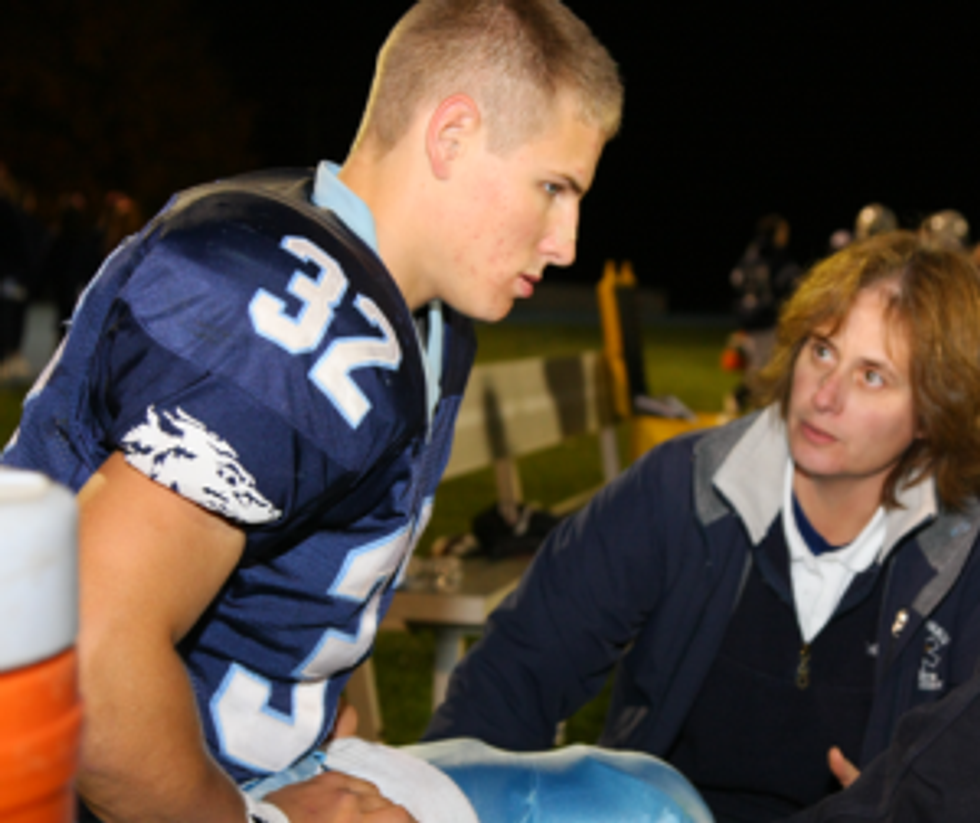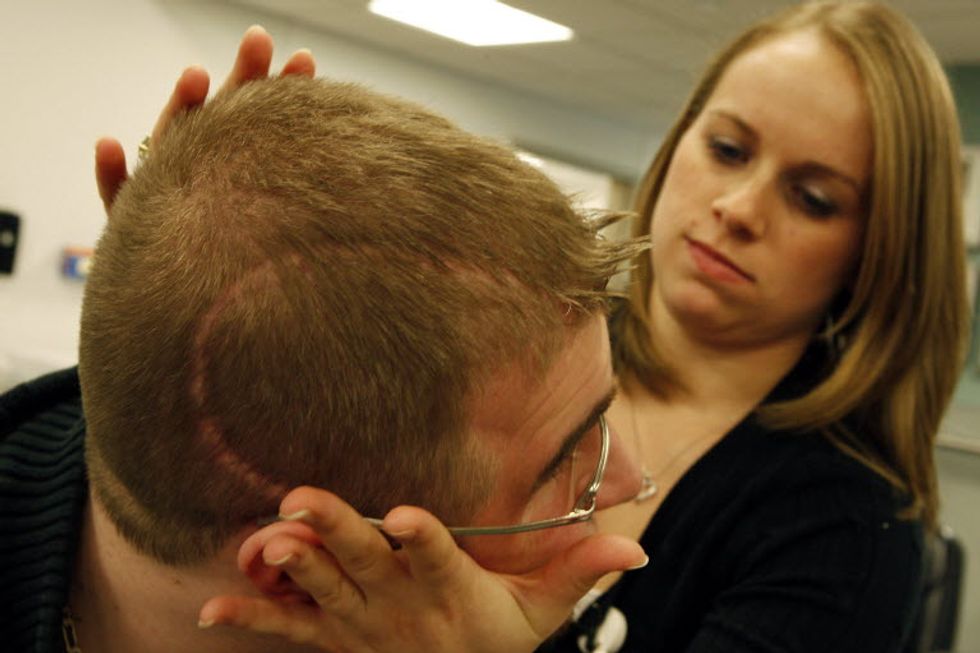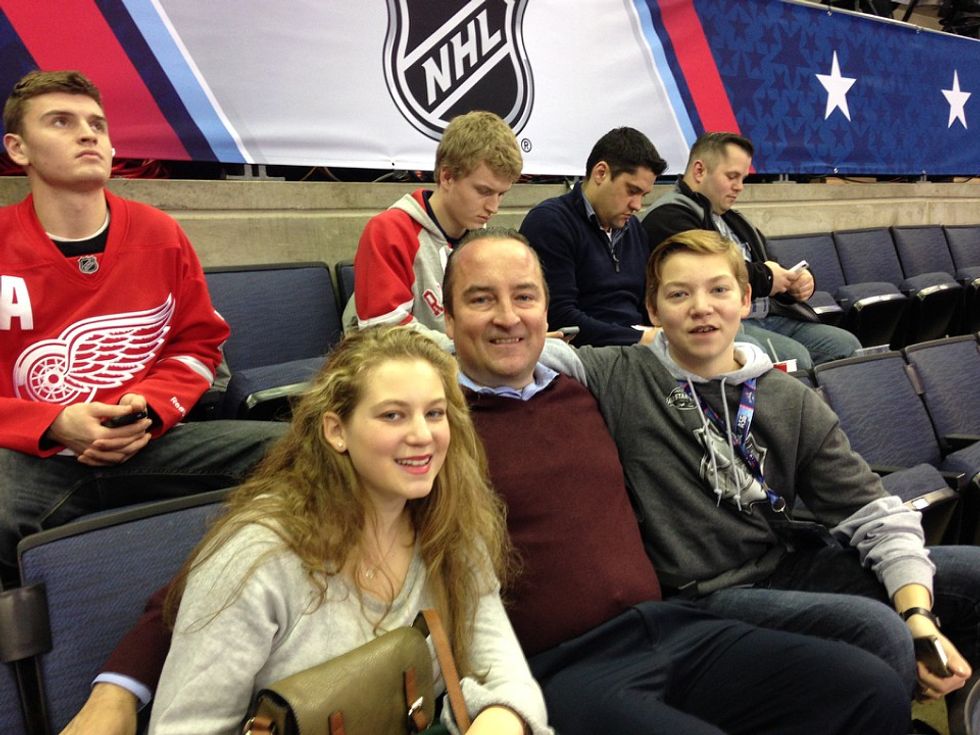The piece below was written by my seventeen-year-old brother, Zach. I am so proud of who he has grown up to be and I love him more than he will ever know. You're my best friend, bubs. I don't know what I'd do without you.
Seize the moment while it’s there because in the blink of an eye, everything can be taken away. I firmly believe that the best athletes are the ones who recognize that every practice, every minute on the field, every long bus ride home is a gift that can be stolen with a swift kick to the head.
Today, I still suffer from memory loss, random aggression, confusion, and depression. The constant headaches and mood swings matter nothing to me. I’ve had 5 concussions: football, basketball, soccer, soccer, soccer. If you think I’ve never desired to play on the field with my brothers, you’re very wrong. I’d give the world to do it again.
Almost every day, someone else will ask if I’ll ever play sports again. I always say the same thing, “I don’t know,” when in reality, that’s just the response the doctor prescribed to keep me from falling into a deep, dark hole of depression after my concussions in the summer of 2015. In reality, I do know. I know for a fact that I will never be cleared to play another game of soccer, be it tomorrow, or when I’m 50 years old.
Two months after a doctor cleared me for full days of school, my parents told me I couldn’t go sledding down a hill unless I was supervised, unless someone had a phone with them, unless I wore my bike helmet. I know that if I fall on the ground, I may not make it back up.
I owe my life to my teammates – my brothers, who didn’t listen to me when I said I was “Fine,” who instead saved my future by telling my coach they suspected I was concussed. Whispering, “Hey coach– I don’t think Keenan is OK,” may sound so minor, but it has saved me years of pain.
On a hot and muggy day in August, when an athletic trainer sees a player try to hurdle another and fall awkwardly on his foot, the trainer can perform the Thompson test to determine if the Achilles tendon is ruptured. On that same hot and muggy day, an athletic trainer can see a player collide with a teammate, and stumble around before clumsily walking back into the huddle.
There’s no test here. The athletic trainer can ask the player to memorize the words “Blue, tree, frog”, stand on one foot and hop three times, and ask the player about his breakfast that morning. In the Thompson test, the trainer squeezes the athlete’s calf until his foot moves.
If the foot doesn’t move, the player is immobilized, and sent in for surgery to repair the tendon. If that same player, on that same day, can’t remember eating his Lucky Charms that morning, he is sent home and told to sleep for a day. This system is obviously flawed.
Concussions are serious. By making my return to athletic activity before I was officially cleared, I increased my risk factor–I was three times more likely to suffer a concussion, according to the Boston University School of Medicine CTE Center.
Concussions are also preventable. Not by banning football, or forcing hockey players to skate while covered in bubble wrap, but they’re preventable through education and recognition. Injuries are simply a byproduct of all sports, contact or not.
What is more important is preventing long-term damage, just as a player with a broken wrist would remove himself from a game. But we can see a broken wrist; we just can’t see a concussion.
By learning about the symptoms of head injuries, we can stay loyal to our teammates, because missing one game is better than missing a career. I have two certificates, actually, from athletic training programs at colleges where I completed summer courses.
Working the sidelines of football, soccer, and lacrosse games, I see things that bring back nightmares. I had to make a senior football player sit out the very last play of his high school career because he had just sustained a blow to the head.
As the clock ticked slowly, he yelled at me, pleading his case to return to the game and finish his season. But missing one play is a whole lot easier than never coming back to the game; I would know.
Take for instance Preston Plevretes, a star linebacker at LaSalle University. In practice, he suffered a minor concussion. He did the right thing and spoke to the team doctor.
Just a few days later, a school nurse at the Student Health Center cleared Preston for all contact. Even though he still had obvious symptoms, his teammates relied on him to play in the next game. In the 3rd quarter, the LaSalle University Explorers punted the ball on a deep fourth down.
Preston raced down the field, dodging one hit after another from the return team. As he neared the return man, he took a dive at his legs. While in midair, an opposing player lowered his helmet, and blindsided Preston. His body dropped to the ground, and as team athletic trainers rushed onto the field, his body went limp.
He was rushed to the emergency room, where they removed a large fraction of his skull in an effort to drain the fluid that engulfed his brain.
He survived, but at what cost? Today, Preston Plevretes is 30 years old. He is barely able to speak, struggles to walk, and spent years in and out of the hospital for operations that attempted to cure the sometimes 10 seizures he would endure daily.
Today, Preston Plevretes is lucky. He suffered Second-Impact-Syndrome and is alive to tell the tale. Preston meets with speech therapists about five times a week to work on his speaking skills so he can deliver these amazing lectures about his story. The main message that he conveys is not that we should eliminate football. Concussions can happen in every sport, however, we need to better recognize the symptoms.
In the summer of 2015, I had my final two concussions. I know they’re the last two, because if I ever have another… there's a chance I won't get back up and if I do, it won't be by myself. I couldn’t make it through a full day of school without a headache until Thanksgiving break.
My friends say they’re jealous when they hear that my 1st semester of sophomore year “doesn’t count” toward my grade point average, but they are not jealous of the days when the headaches were so bad I couldn’t eat, the days when the headaches were so bad I spent the entire day crying, the days when the headaches were so intense I thought they would never end and there was only one way out of the pain.
It falls on us to reflect the qualities we see every morning on the entrance to University School as we cruise past those dreaded speed bumps. It is our responsibility to make sure the horror story of Preston Plevretes never happens again. We stay loyal to our teammates by benching ourselves, and asking our teammates the tough questions.
We have a responsibility to ensure that our teammates stay safe. We are considerate when we never again force a teammate to return to play early, or take another hit. We’re here as young men of character, given the task to ensure we learn from the mistakes of the past. Sit out that one play. I’ve learned it first hand; it’s better than the alternative.
Now I work as the manager for both the soccer and lacrosse teams. It’s the closest I can be to the game without stepping on the field. And now, every day where I can stand and watch practice is the perfect day for me.


















































